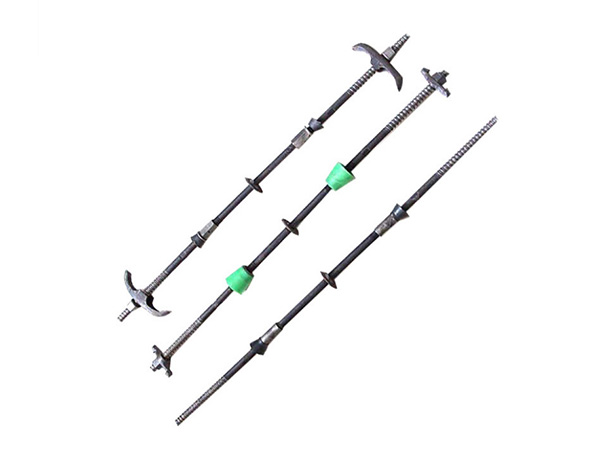- Site Navigation -

Formwork Tie Rod
A Formwork Tie Rod(also universally known as a Tie Bar or Tie Bolt)is a critical,tension-based component used in concrete construction to secure the two opposing faces of formwork(m......
A Formwork Tie Rod(also universally known as a Tie Bar or Tie Bolt)is a critical,tension-based component used in concrete construction to secure the two opposing faces of formwork(molds)against the immense fluid pressure of freshly poured concrete.Its primary function is to ensure that the formwork remains rigid,accurately spaced,and perfectly aligned during the pouring and curing process,thereby guaranteeing the dimensional accuracy and structural integrity of the final concrete element.
Key Features&Design:
A typical system consists of several parts:
Internal Threaded Rod:The core component is a high-tensile strength steel rod,usually threaded along its entire length.This rod passes through the concrete wall or slab,connecting the two formwork faces.
External Holding Devices:These are placed on the outside of the formwork and bear against the wales(horizontal strengthening members).They include:
Nuts&Washers:The most basic system,used with steel formwork.
Heavy-Duty Wedges:Used in conjunction with strongbacks in gang-form systems.
Internal Spacer(a.k.a.the"Tie"):This is the most important part for the final product.It determines the precise thickness of the concrete wall.Common types include:
Plastic Cone&She-Bolt:A reusable plastic cone sits inside the formwork.The threaded rod passes through it.After stripping,the rod is removed,leaving a conical hole in the concrete.
Coil Rod&Sleeve:A plastic sleeve surrounds the rod through the concrete.A coiled section of the rod allows it to be snapped off below the concrete surface after curing.
Waterstop(optional):For water-retaining structures(like reservoirs or basements),a waterstop is often welded to the rod at the mid-point to create a permanent water barrier within the concrete joint.
How It Works:The Principle of Contained Pressure
The system works by creating a balanced tensile assembly:
The threaded rod is inserted through holes in the two formwork panels.
The internal spacer(e.g.,plastic cones)is fixed to the rod to ensure the forms are held at the exact correct distance apart.
On the outside of each formwork face,the rod is secured with holding devices(washers/nuts or wedges/plates).
As the concrete is poured,its hydrostatic pressure pushes outward against the forms.
This outward force is transferred into the wales and then into the tie rods,placing them under tremendous tension.
The tie rods,in turn,resist this force by pulling the two formwork faces together,effectively containing the pressure and preventing bulging or blowouts.
Common Applications:
Wall Construction:Casting in-situ concrete walls for buildings,basements,and civil structures.
Foundation Walls:Creating large,deep foundation walls.
Columns:Formwork for large rectangular or square concrete columns.
Bridge Piers and Abutments:Large-scale civil engineering projects.
Water Retaining Structures:Reservoirs,treatment tanks,and swimming pools(using waterstop ties).
Advantages:
High Strength:Capable of resisting extremely high concrete pressures,allowing for taller pours.
Dimensional Accuracy:Ensures the final concrete element is produced to the exact specified thickness.
Efficiency:Systems are designed for quick assembly and disassembly,speeding up construction cycles.
Flexibility:Reusable systems and various tie types(snap-ties,she-bolts)cater to different project needs and finish requirements.
The Striking Process(Key Differentiator):
What happens to the tie rod after the concrete cures is a defining feature:
Reusable Systems(She-Bolt):The internal threaded rod is unscrewed and pulled out for reuse.The plastic cones are removed,leaving a neat conical hole that is later filled with grout.
Snap-Tie Systems:The external holding devices are removed.The exposed ends of the rod are snapped off(using a special tool or by bending)about 25mm inside the concrete surface.The small,shallow hole is then patched.
Through-Tie(for heavy construction):The rod is left in place and becomes a permanent part of the structure.








